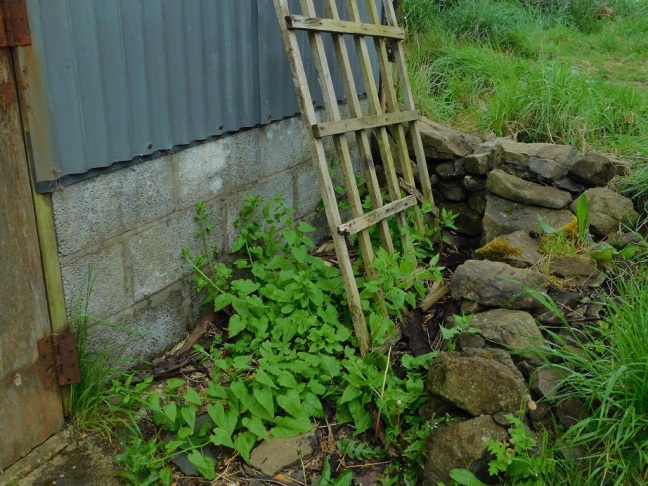
 12
12




 17
17




 19
19




 10
10




 12
12




 19
19





 18
18





How Permies works: https://permies.com/wiki/34193/permies-works-links-threads
My projects on Skye: The tree field, Growing and landracing, perennial polycultures, "Don't dream it - be it! "
 12
12




Weeds are just plants with enough surplus will to live to withstand normal levels of gardening!--Alexandra Petri
 11
11







 12
12




From under the mother plum tree.
 11
11




 9
9




 7
7




 13
13




You are welcome to check out my blog at http://www.theartisthomestead.com or my artwork at http://www.davidhuang.org
 11
11




 12
12




Best luck: satisfaction
Greatest curse, greed
 9
9




Love is the only resource that grows the more you use it.
David Brower
 5
5




Joe Grand wrote:Tell me if any of these are perennials:
Good old Henry-yes
Vineland Hardy Prickly Pears-yes
Purple Shiso /Perilla?
Red Fire Orach?
Ruby Red Swiss Chard?
I am planting in zone 8a, I have seeds, thanks.






 4
4




"Also, just as you want men to do to you, do the same way to them" (Luke 6:31)
 1
1




greg mosser wrote:it’s not the whole growing season, but we eat sochan (Rudbeckia laciniata) from early april through about midsummer. started as foraging but i’ve encouraged it enough that there’s lots of it in the garden, in the yard, in that patch right across the creek, etc, and it probably doesn’t count as foraging anymore. we eat it every few days the entire season long, and i’ve never thought to measure but we must consume a truly huge volume of this plant annually, including cooking some down and freezing for later in the year.






 6
6




Hooray for Homesteading!
 13
13




 10
10




 8
8




Best luck: satisfaction
Greatest curse, greed
 8
8




“We can complain because rose bushes have thorns, or rejoice because thorn bushes have roses.” — Abraham Lincoln
 9
9




Check out Redhawk's soil series: https://permies.com/wiki/redhawk-soil
 7
7




Ellendra Nauriel wrote:I'm fond of purslane. It works well as a lemon substitute in a lot of dishes.
Blazing trails in disabled homesteading
 12
12




 4
4




 8
8




Jamie Chevalier wrote:Two companies that used to carry tree collards, Bountiful Gardens and Sundial Seeds, are both out of business.
Quail Seeds has tree collard cuttings grown by the same guy, who has been stewarding them for over 30 years. They also carry seeds for a long list of perennial vegetables including those above. https://www.quailseeds.com/store/c103/Perennial_Vegetables.html

Blazing trails in disabled homesteading
 4
4




My tree nursery: https://mountaintimefarm.com/
 7
7




It's never too late to start! I retired to homestead on the slopes of Mauna Loa, an active volcano. I relate snippets of my endeavor on my blog : www.kaufarmer.blogspot.com












 4
4




Jamie Chevalier wrote:
3 Erba Stella Not so high-yielding but very good flavor and crunchy texture. Like most things you need to keep it picked for continued tenderness and mild flavor. To zone 4, little to no protection.
.(Plantago coronopus) ...... Native to Europe’s rocky coastline, it is a seaside plant that thrives in cool wet weather (sound familiar?) and even saline soils. It is a survivor to the extreme ....... AKA “Minutina” and “Buckshorn Plantain”.

How Permies works: https://permies.com/wiki/34193/permies-works-links-threads
My projects on Skye: The tree field, Growing and landracing, perennial polycultures, "Don't dream it - be it! "
 6
6




 6
6




Little house with a big garden in the city!
"It is no measure of health to be well adjusted to a profoundly sick society." ~ J. Krishnamurti
 5
5




Dian Hong wrote:How do you prepare it at different points in the season? New to sochan and looking forward to it.
greg mosser wrote:it’s not the whole growing season, but we eat sochan (Rudbeckia laciniata) from early april through about midsummer. started as foraging but i’ve encouraged it enough that there’s lots of it in the garden, in the yard, in that patch right across the creek, etc, and it probably doesn’t count as foraging anymore. we eat it every few days the entire season long, and i’ve never thought to measure but we must consume a truly huge volume of this plant annually, including cooking some down and freezing for later in the year.
 3
3




Matthew Nistico wrote:
Ellendra Nauriel wrote:I'm fond of purslane. It works well as a lemon substitute in a lot of dishes.
I love purslane, but is it perennial in your climate? I would find that very surprising, as it dies in winter here, and my winters are much milder. Or do you count on it self seeding? I don't yet have enough experience with purslane to know how well it self seeds for me. It didn't last year, but that was also my first year ever growing it.
 3
3








